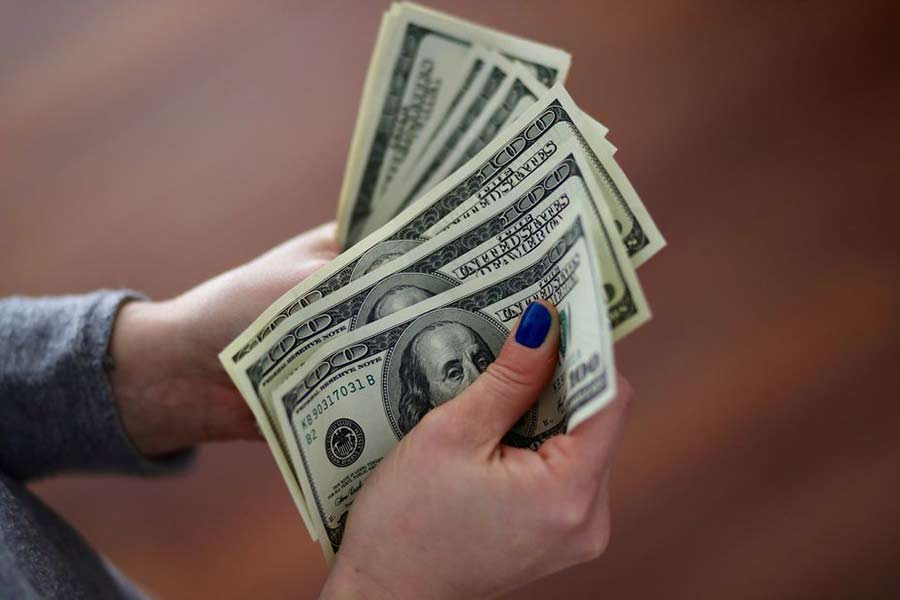
Published :
Updated :

 Bangladesh received the third-highest monthly remittance ever of US$2.53 billion in just-past February as officials said the dismantling of forex-sapping grey market now pays off.
Bangladesh received the third-highest monthly remittance ever of US$2.53 billion in just-past February as officials said the dismantling of forex-sapping grey market now pays off.
The latest remittance-receipt disclosure by Bangladesh Bank (BB) on Sunday came at a time when the country struggles to replenish its emaciated foreign-exchange reserves.
The country bagged the highest amount of remittance in December last, $2.64 billion, followed by the July 2020 count of around of $2.60 billion.
With the latest amount, the total receipt stood at $18.49 billion in the first eight months of this fiscal year (FY'25), which is 23.8-percent higher than the $14.94 billion obtained during the same period of time of the previous fiscal. Such a steady rise in the receipt of foreign currencies, the US dollar in particular, gives some respite to the economy that has been facing multipronged macroeconomic strains because of depletion of its foreign-exchange reserves.
In fact, the upturn comes at a time when the central bank takes several regulatory measures to bolster the reserves on clearing overdue government import payments.
A Bangladesh Bank official hails the upturn in remittance, saying that the country has been witnessing growing inflow of remittance after the recent changeover.
Apart from strengthening deterrent measures against Hundi operations, the official says, the banking regulator takes various measures that ultimately help control the exchange-rate differentials between formal and informal markets and this "allures remitters to send more money back home".
Speaking on condition of anonymity, the central banker mentions that the BB made the biggest depreciation of the local currency against the American greenback in May through the introduction of crawling peg-driven exchange mechanism when the exchange rate rose to Tk 117 from Tk 110. And then the rate further extended to Tk 120 and the banks were allowed to pay remitters around Tk 123 a dollar.
Soon after the changeover in state power, he goes on saying, the central bank took several steps to strengthen its monitoring to stop forex outflow from the financial sector through eliminating the grey market.
"These factors incentivise the remitters to send more money back home," he told the FE writer, with a hope of further rise in this month ahead of Eid-ul-Fitr festival.
Economist Dr M Masrur Reaz, chairman of the Policy Exchange of Bangladesh, notes that the controversial business-conglomerate S Alam Group manipulated the forex market through creating its own grey market by the commercial banks under its control riding on favourable regulatory steps of that time.
After the regime change through the July-August mass uprising, he says, the latest regime of the central bank successfully destroyed the grey market by intensifying their regulatory moves in those banks.
"So, the forex demand on the unauthorised market almost got eliminated. This is one of factors apart from exchange-rate hike behind the remittance surge," the economist notes.
He was suggesting for the regulator not go for significant raise in exchange rate under the reference rate-driven regime because it could result in the remitters reverting to speculating behaviour.
jubairefe1980@gmail.com


 For all latest news, follow The Financial Express Google News channel.
For all latest news, follow The Financial Express Google News channel.